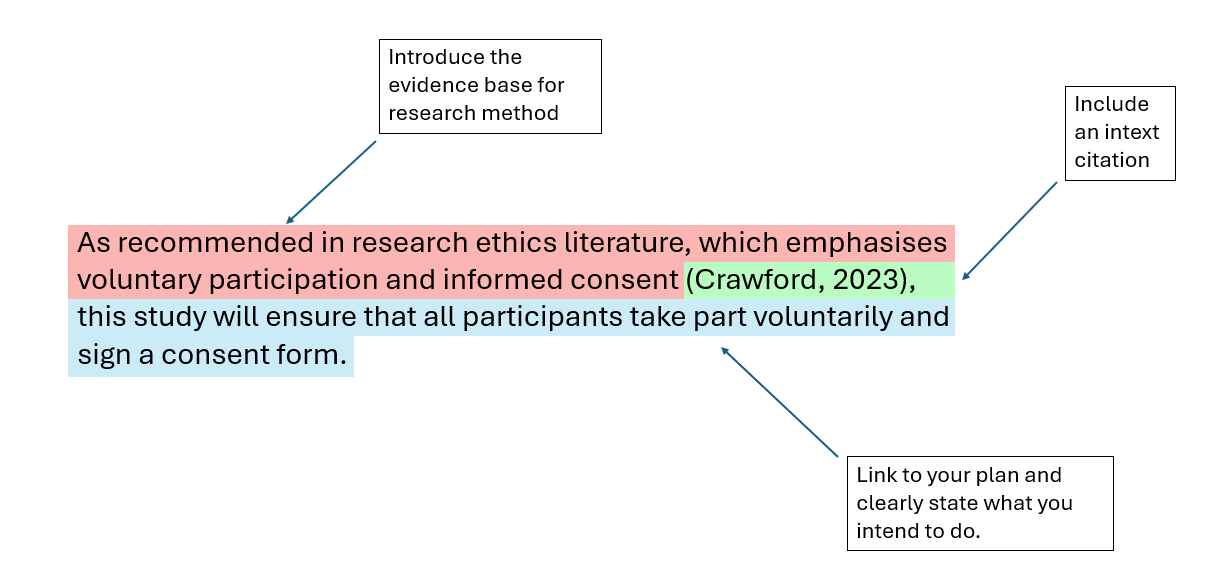|
Key Points
|
A research proposal outlines a proposed research project, detailing its purpose, significance, and methodology. The proposal, sometimes called a brief, outlines the researcher’s plan for conducting research to answer a particular research question.
Typically, a research proposal includes an introduction or problem statement that outlines the focus of the study, a clear research question, a rationale explaining the topic and its significance, a literature review identifying gaps in the current literature and a detailed methodology describing the approach and tools to be used.
How do I plan it?

How do I structure it?

Common Headings

* Note these are abridged versions of typical paragraphs
|
Significance of the Research This research will enhance the understanding of how academic support services contribute to educational success for international students in higher education in Australia. Identifying specific ways that these services can support student academic success could be used to inform policies and practices in Australian higher education institutions. Improving the retention rates for international students could have broader impacts by contributing positively to the international student education sector, an important contributor to Australia’s gross domestic product (GDP) (Deloitte Access Economic, 2020).
|
Introduce the importance of the research to the participants. Identify how the research will help participants.
Identify broader impacts to other stakeholders.
|
|
Study Participants and Sampling In-depth and semi-structured interviews will be conducted with 20 international students studying at the Higher Education Learning Institute (HELI). Qualitative data analysis will be performed using the thematic analysis method. To participate, students must have lived and studied in Australia for at least six months but no more than one year. Participants will be chosen through targeted sampling to include a diverse group with varying levels of academic success. Students who speak English as their first language will be excluded from the study, as their academic challenges differ significantly from those of non-English speaking students.
|
Introduce who the participants are and how many you will recruit. Include any important background information and the selection process. Include any exclusion criteria.
|
|
Literature Review |
|
Much of the current literature on X pays particular attention to … Author: reported / identified / showed that /demonstrated that … |
|
Research Design and Methods |
|
This study will adopt a… |
|
Significance of the Research |
|
The findings of this study could inform policies aimed at improving... Understanding [topic] is crucial for addressing challenges related to... By exploring [topic], this study could provide evidence to support... |
|
Communication of Results |
|
The results of this study will be shared through… Findings will be presented at relevant … Results will be disseminated through… A detailed report summarizing the key outcomes will be provided to… |
Why do you need to include evidence?
When planning a research project, it is important to show that your choice of methods is supported by evidence. Using evidence from academic sources demonstrates that your approach is not only personal preference but is also trusted and tested in the field. This strengthens your research by linking your plan to best practices and recommendations from other scholars. It also helps readers understand why your method is appropriate for answering your research question. By integrating evidence into your explanation, you make your research design more credible, reliable, and academically sound.
What does it look like?

Introducing Evidence
“As recommended in research ethics literature…”
“In line with best practice for qualitative analysis…”
“Following established procedures…”
“Consistent with research guidelines…”
Linking to your study plan
Clearly describe what you will do in your research.
Use verbs like will ensure, will require, will analyse, will follow.
Example phrases:
“all participants will sign a consent form”
“semi-structured interview data will undergo thematic analysis and translation”

